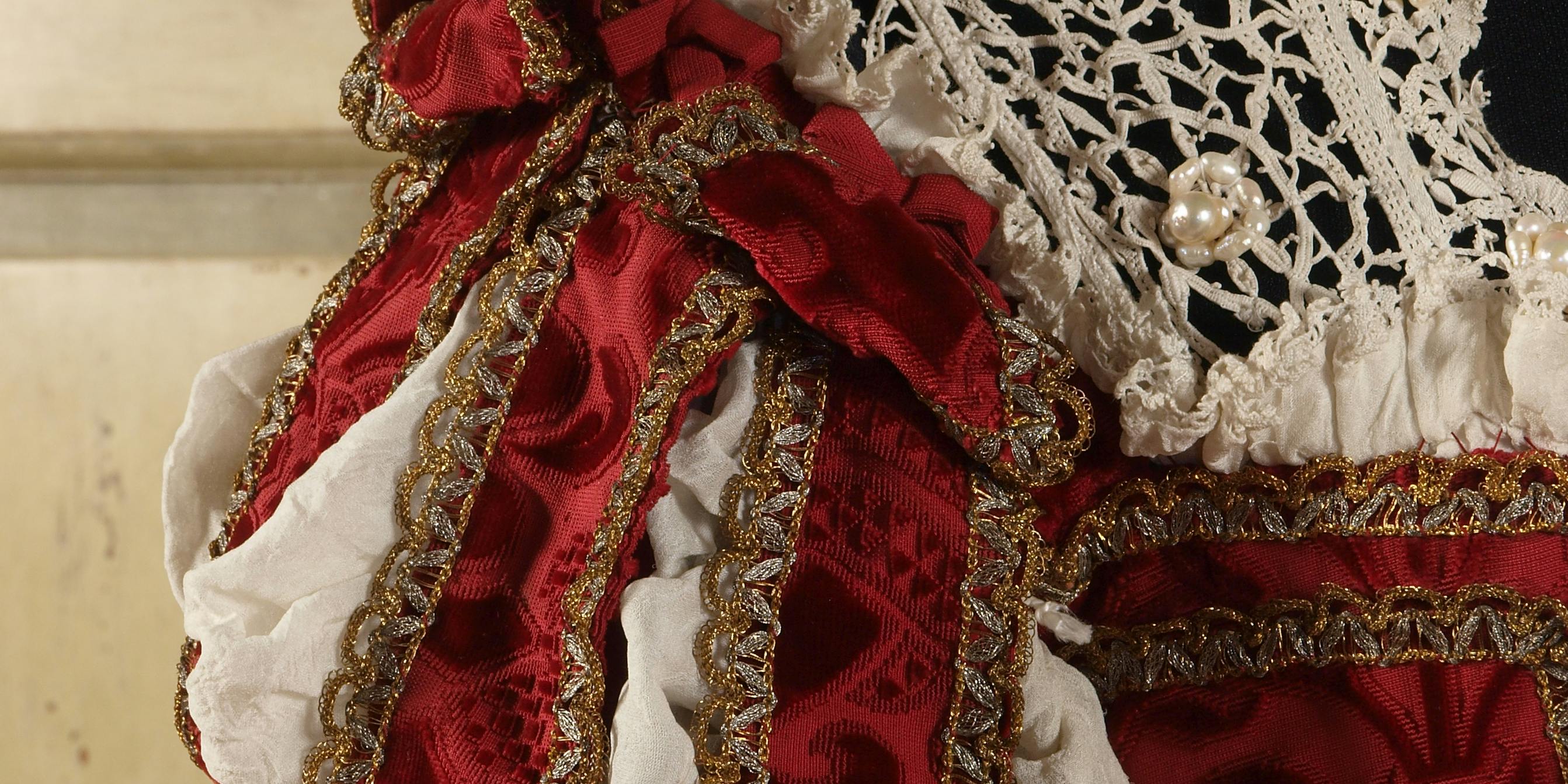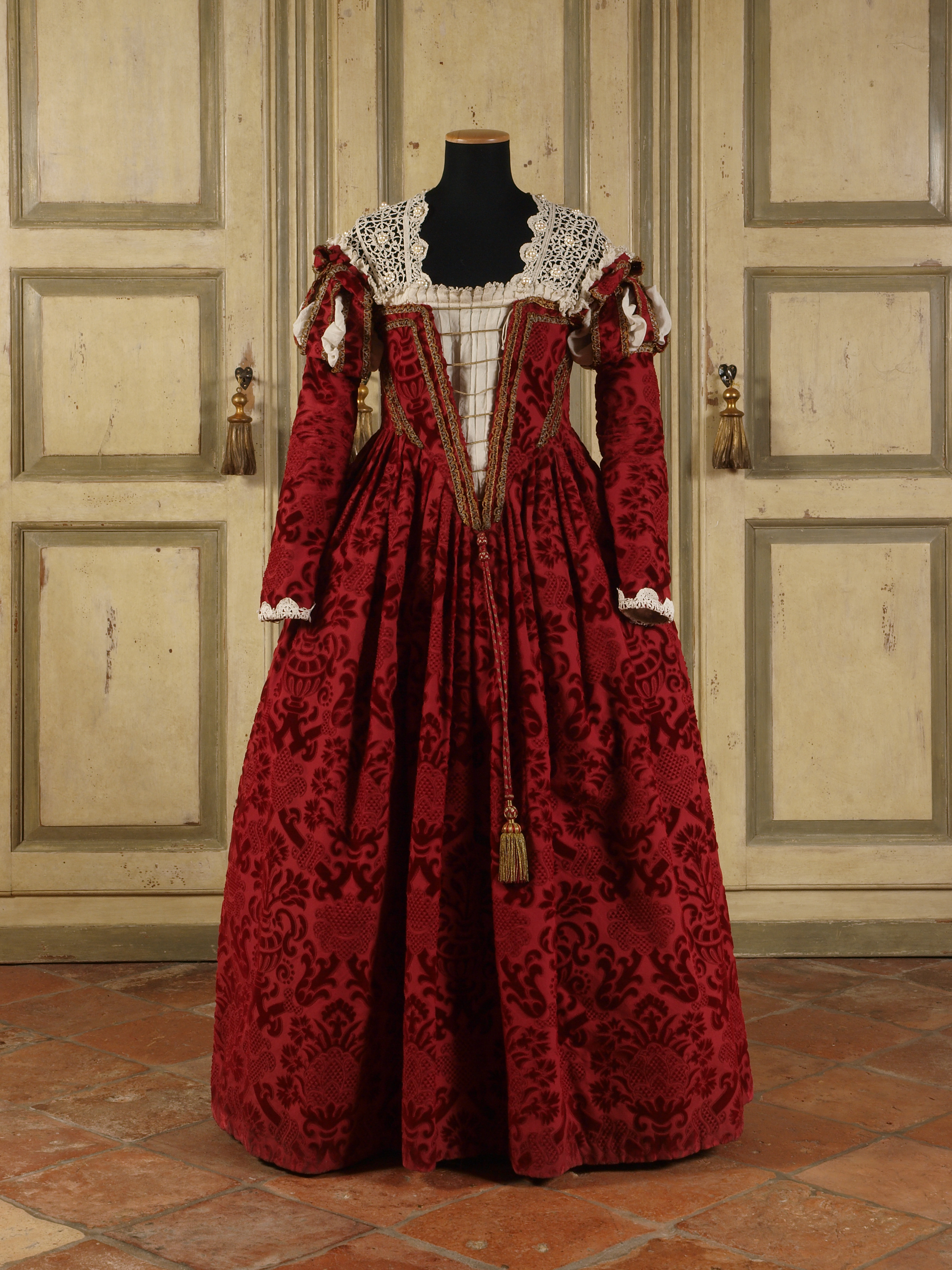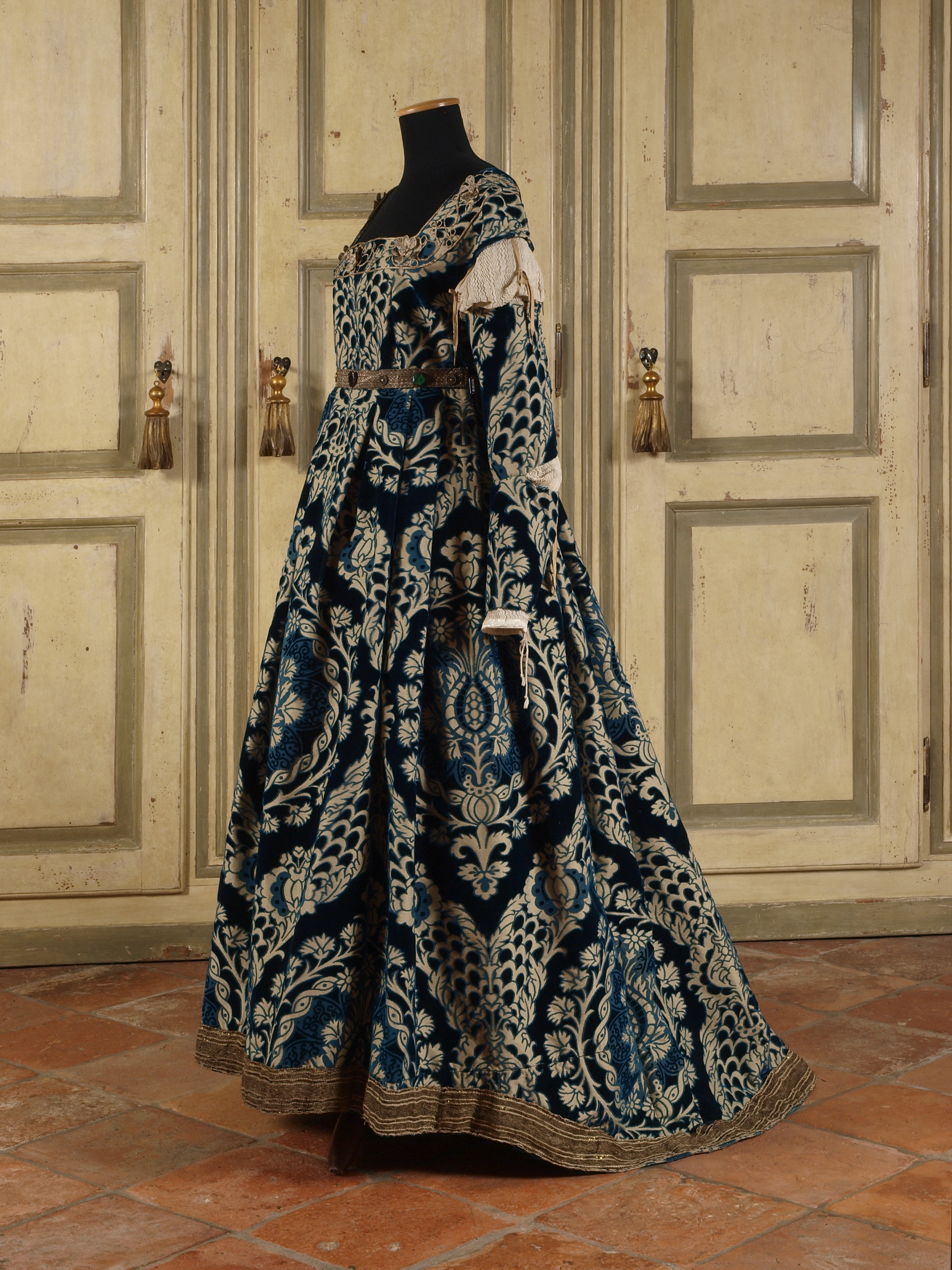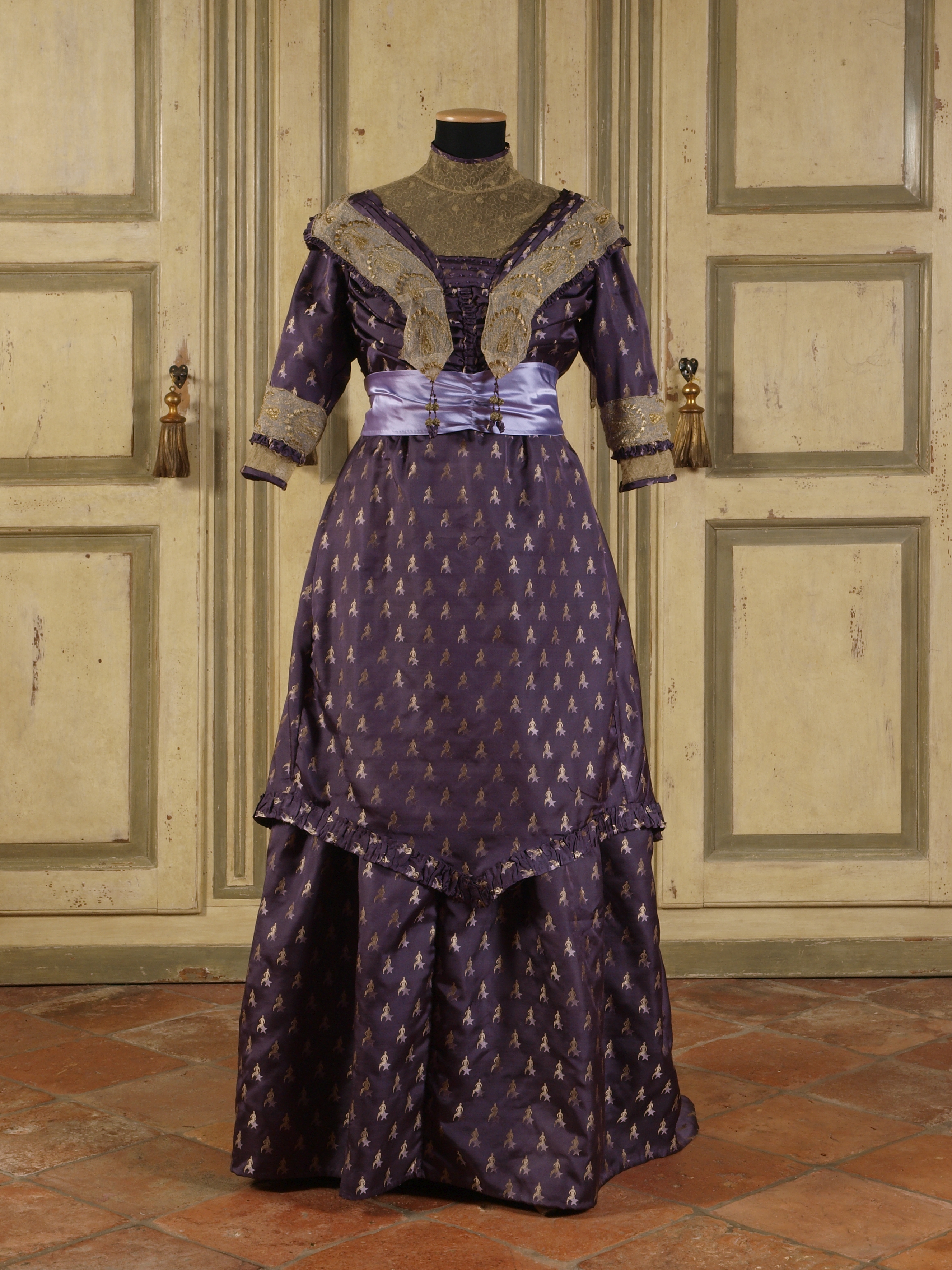
Mara Bertoli Private Collection of Historical Costumes

WOMEN’S COSTUME "Palio"
Reconstruction of a Venetian style in fashion around 1570
Tailoring: Castiglione delle Stiviere / 1993
Textile: “Palio 1”, hand-made ciselé velvet in red silk.
Manifattura Fondazione Arte della Seta LISIO, Florence / 1991
Mara Bertoli Collection, Castiglione delle Stiviere, Mantua
This costume was inspired by a 1571 painting by Paolo Veronese entitled “Presentation of the Cuccina family to the Virgin”, conserved at the Dresden Gemäldegalerie. In the foreground of the painting is a lady dressed in a style that was fashionable in Venice from about 1550 to the 1570s. The bodice narrows to a point at the front, while the waistline remains rather high; the full skirt has soft pleats and is not all stiff like the Spanish gowns on which it is modelled. The detachable sleeves have so-called “braccialetti” (puffed bracelets) at the top, where they join the blouse.
This costume was entirely hand-sewn, using 7 metres of the hand-woven red silk ciselé velvet called “Palio 1”, and it is lined with red taffeta. The bodice is boned at the sides, tied at the front with gold cord and trimmed with gilded and silvered metal wire. The lining of the banding of the “braccialetti” is shorter in order to keep them plump. The “bavaro” (collar) in old reticella or point coupé lace, embroidered with rosettes of real baroque pearls, is fixed directly to the blouse.
Exhibition: this costume was displayed in Berlin in the 1995 exhibition entitled "The Arts and Crafts of Fashion in Venice”.

WOMEN’S COSTUME "Pasquini"
Reconstruction of a style in fashion in Northern Italy in the last decade of the XV century
Tailoring: Castiglione delle Stiviere / 1997
Textile: “Pasquini”, hand-made ciselé velvet in blue silk. Manifattura Fondazione Arte della Seta LISIO, Florence / 1993
Mara Bertoli Collection, Castiglione delle Stiviere, Mantua
This costume derives its inspiration from the many portraits of female subjects, mostly by painters in the Lombardy area, that depict the sitter in a sideways pose, her hair plaited and either decorated with pearls in the so-called “coazzone” style or held in place with a gold or silver thread net.
The dress is gathered comfortably below the bust and the square neckline is not too low and is edged with an appliqué motif with piping and metal ribbons. The skirt has box pleats that meet at the front and reveal the large ogival motif of the velvet.
The tailoring of this entirely hand-sewn costume was complicated by the fact that the dress-makers were determined not to waste any of an eight-metre length of the precious hand-woven blue and ivory ciselé velvet called “Pasquini”. They managed to overcome all the pattern layout problems presented by the large ogival motif and the generous repeat and disguised a small join in the hem with a 6-centimetre wide antique trimming, which also gives the dress a small train.
Exhibition: the costume was created in response to a request for an exhibition piece in late fifteenth century style and inspired by the young Isabella d’Este. The costume designer and artist, Antonella Cappuccio, included it in one of her large paintings of scenes involving the Gonzaga dynasty. The costume was shown beside the painting in an exhibition of the artist’s work, entitled “Love of the Sacred, Love of the Profane in the Palazzo Ducale in Mantua in 1998.

WOMEN’S COSTUME "Venerdì"
Reconstruction of a style in fashion in 1910.
Tailoring: Castiglione delle Stiviere / 2007.
Textile: “Venerdì”, hand-made lancé silk lampas. Manifattura Arte della Seta LISIO, Milan / late 1920s-early ‘30s.
Mara Bertoli Collection, Castiglione delle Stiviere, Mantua.
The style of this dress derives from an original in Mara Bertoli’s Collection of Period Costumes. The original was made of a textile with a pattern of small decorative motifs, in the same shade of violet as the Lisio textile used for the reconstruction.
The Lisio textile, which still bears the manufacturer’s lead seal, was purchased on the antique market as a 6-metre length.
The simplified, slim line of the costume suggests the abandonment of the corset, then being advocated in France by Paul Poiret.
It is accompanied by an enormous flat hat made of violet velvet and a large paradise bird feather.
This costume was created for the 2007 Venice Carnival.